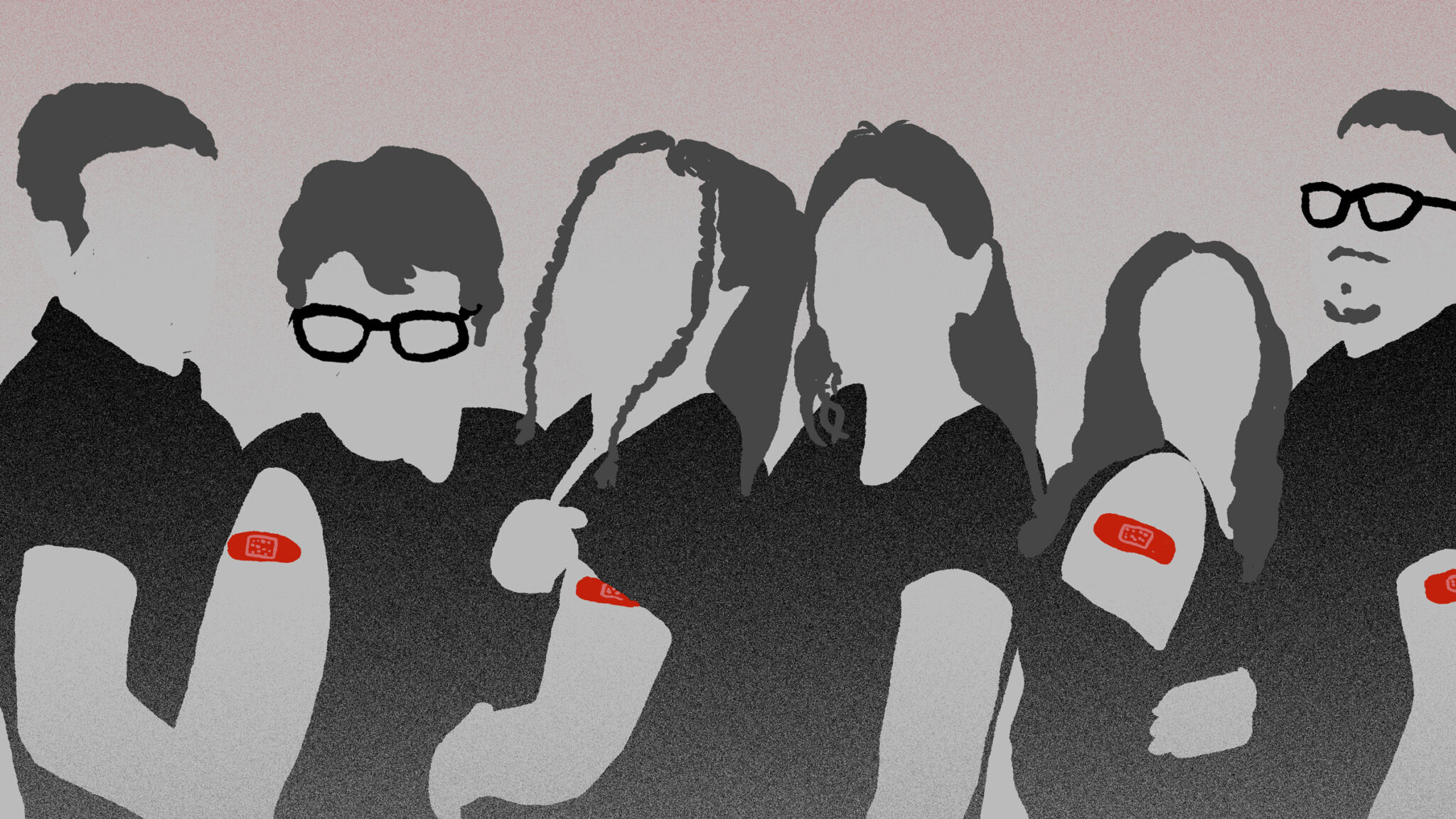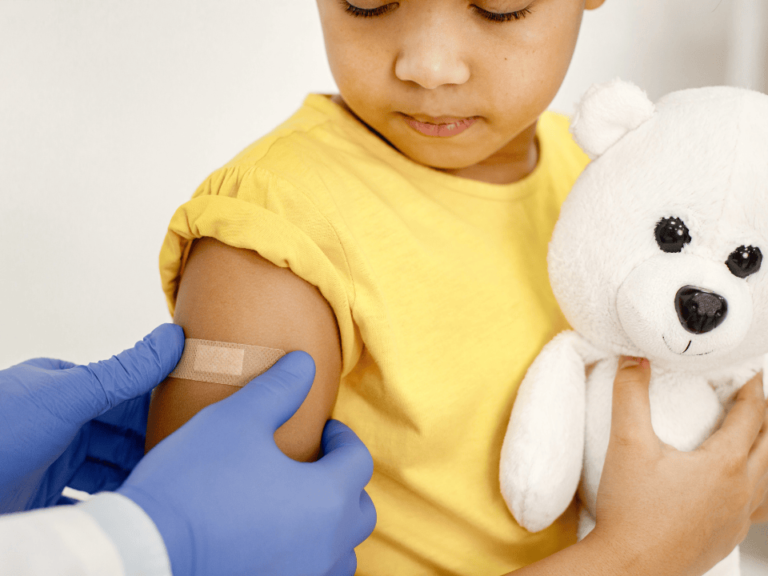In an era of intensifying judicial repudiation of evidence-based guidelines and deepening public mistrust toward science, America’s screening rate for cervical cancer has been declining.
Alarmed by emerging public health data, HPV and cervical cancer experts are calling on NCI-designated cancer centers to double down on efforts to overcome barriers in uptake of vaccines and screening.
A significant percentage of U.S. adolescents have not received HPV vaccines, and a similar proportion of adults are not up to date on screening for cervical cancer, despite decades of public health messaging on cervical cancer as a preventable disease.


To confront this, St. Jude Children’s Research Hospital is rapidly expanding its targeted vaccination campaign for children ages 9-12.
“We’ve seen some disturbing trends in cervical cancer screening, which is the only type of HPV cancer for which routine screening is recommended by the U.S. Preventive Services Task Force,” Heather Brandt, director of the HPV Cancer Prevention Program and co-associate director for outreach at St. Jude Comprehensive Cancer Center, said to The Cancer Letter. “And we’ve seen some disturbing trends over the last 20 years, where there’s been almost this steady shift downward in cervical cancer screening.”
A conversation with Brandt appears in this issue.
Meanwhile, NCI is close to concluding a large trial that could reshape the standard of care in HPV vaccination.
“The main thrust of our research at NCI is to develop evidence that giving a single vaccine dose may be able to provide strong protection,” Douglas Lowy, principal deputy director at NCI and pioneer in human papillomavirus research, said to The Cancer Letter. “We believe that that would lead to increased vaccine uptake, because in the United States, it would be logistically much easier to give one dose rather than two.”
A conversation with Lowy appears in this issue.
The latest data from NCI and CDC show that:
- In recent years, Americans have become less aware that HPV causes cervical cancer. This appears to be the case, based on an April 2023 abstract using data from NCI’s Health Information National Trends Survey (HINTS).
- At the same time, Americans have grown increasingly concerned about the “safety or side effects” of the HPV vaccines. This is measured in a May 2023 study on trends in HPV vaccine hesitancy.
- As of 2021, 38% of adolescents were not up to date on their HPV vaccines, and up to 23% have not received at least one dose of any HPV vaccine, according to a September 2022 CDC Morbidity and Mortality Weekly Report (MWWR).
- From 2005 to 2019, the percentage of women overdue for cervical cancer screenings has increased from 14% to 23%, according to a January 2022 study that assessed guideline-concordant cervical cancer screening rates.
HPV vaccine coverage among U.S. adolescents 13-17 years
Source: Pingali et al. CDC Morbidity and Mortality Weekly Report (MMWR). September 2, 2022.
| 2019 | 2020 | 2021 | |
|---|---|---|---|
| ≥1 dose1 of HPV vaccine | 72% | 75% | 77% |
| Adolescents who were up to date2 with HPV vaccination | 54% | 59% | 62% |
- Includes receipt of any HPV vaccine—does not distinguish between 9-valent, quadrivalent, or bivalent vaccines.
- Standard of care: At least two doses under 15 years, or all three doses 15-17 years
Urban areas have higher vaccine uptake than rural areas
| Rates of overdue cervical cancer screening (2019) | |
|---|---|
| Black | 22% |
| White | 20% |
| Uninsured | 42% |
| Public Insurance | 28% |
Source:Suk R, et al: Assessment of US Preventive Services Task Force Guideline–Concordant Cervical Cancer Screening Rates and Reasons for Underscreening by Age, Race and Ethnicity, Sexual Orientation, Rurality, and Insurance, 2005 to 2019. JAMA Network Open. January 18, 2022
“What’s really happening there? How can we identify effective messages and interventions to really turn the tide and see that trend increase over time?” St. Jude’s Brandt said to The Cancer Letter. “But while we are doing that in the United States, in Australia, they’re on track to eliminate cervical cancer by the year 2035.”
The U.S. spends twice as much on cancer care as the median country among 22 of the 34 high-income countries in the Organisation for Economic Co-operation and Development, according to a cross-sectional study of cancer care expenditures and age-standardized population-level mortality rates published May 2022 in JAMA Health Forum.
“Findings of this study suggest that the U.S. expenditure on cancer care may not be commensurate with improved cancer outcomes,” the authors concluded.
The U.S. is also the only major nation without universal health coverage, and the U.S. life expectancy is 3 years lower than the OECD average, according to 2022 OECD Health Statistics.
Public health leaders are grappling with religious, political, and judicial threats to screening and vaccination.
Coverage for cervical cancer screening—and more than a dozen cancer screening recommendations—continues to be in jeopardy as Braidwood v. Becerra, a case that aims to eliminate mandatory zero-copay coverage based on recommendations from the U.S. Preventive Services Task Force, is litigated.
Earlier this year, Reed O’Connor, a federal judge in Texas, issued a nationwide injunction that could end zero-copay coverage of preventive services mandated by a provision under the Affordable Care Act (The Cancer Letter, March 31, 2023).
Although the U.S. Court of Appeals for the Fifth Circuit has stayed the lower court’s ruling as of June 13, legal scholars expect the case to reach the Supreme Court, which is dominated by a six-justice conservative majority that recently overturned Roe v. Wade, struck down affirmative action in higher education, and dealt a setback to LGBTQ+ rights (The Cancer Letter, July 14, June 30, 2023; July 1, 2022).
“If the case goes to the Supreme Court and the Supreme Court sides with the lower court, this could once again provide a disincentive for people to get screened,” Lowy said. “The Affordable Care Act actually provided an incentive for people to get screening and not just cervical cancer screening, but all preventive services are not supposed to have a copay.
“I’m saying this in a nonpartisan way. We want to make it as easy as possible for people to take advantage of preventive services, and copays actually represent a barrier.”
St. Jude: Join our HPV awareness campaign
On March 4, 2021, St. Jude’s HPV Prevention Cancer Program launched Path to a Bright Future, a campaign designed to normalize HPV vaccination as cancer prevention, improve on-time vaccination rates, and complete the vaccine series for children by the time they turn 13.
Two years later, the campaign is collaborating with nearly 160 partners, including national organizations— American Cancer Society, American Association for Cancer Research, Association of American Cancer Institutes—and NCI-designated cancer centers.
“We continue to follow the CDC [Advisory Committee on Immunization Practices] guidelines for HPV vaccination, which is two doses if you start before the 15th birthday and three doses thereafter,” Brandt said. “And of course, three doses, always, if somebody is immunocompromised.
“Our primary target is really parents and caregivers, but we also recognize the way in which St. Jude can build confidence in the general public, healthcare providers, and even those who are of the age to be vaccinated themselves.
“And so, Path to a Bright Future is really based on those concepts,” Brandt said. “It’s that moment of prevention today that offers that lifetime of protection for the future.
HPV vaccination is most effective when administered between the ages of 9-12—the target age range for the St. Jude campaign—but it is recommended for everyone aged 9 to 26 years and for some people aged 27 to 45 years.
Nearly 80 million Americans—one out of every four people—are infected with HPV, and of that number, nearly 36,000 will be diagnosed with HPV cancers this year. More than 200,000 will be diagnosed with cervical pre-cancer.
I worry that these parents and caregivers will look back in 20 years, when maybe their child has developed cervical cancer, anal cancer, or oropharyngeal cancer, which could have been prevented if they had made the decision today to protect them.
Heather Brandt
Although vaccination rates for adolescents have increased in recent years, cancer centers and healthcare providers should continue to focus on the message that HPV vaccination prevents over 90% of cancers caused by HPV infections.
“I worry that these parents and caregivers will look back in 20 years, when maybe their child has developed cervical cancer, anal cancer, or oropharyngeal cancer, which could have been prevented if they had made the decision today to protect them,” Brandt said. “I think there’s some general concerns about vaccinations overall, particularly with the COVID-19 vaccine.”
From 2018 through 2020, non-Hispanic Black communities reported declining trust in cancer information from government health agencies during the COVID-19 pandemic—a trend that may “unfavorably impact participation in preventive care,” according to a March 2023 study by University of Miami researchers.
Based on national mortality data from 2000 to 2012, the cervical cancer death rate for Black women was 10.1 per 100,000—more than double the 4.7 per 100,000 rate for white women, according to a 2017 study on age-standardized and age-specific annual U.S. cervical cancer mortality rates published in Cancer.
To put this racial disparity into perspective, the authors noted that:
- The corrected overall mortality rate for white women is equivalent to the 2012 GLOBOCAN estimate of the cervical cancer mortality for women living in developed nations (i.e., Europe, Northern America, Australia/New Zealand, and Japan).
- The corrected estimate for Black women living in the U.S. is on par with the GLOBOCAN estimate for less developed nations (i.e., all of Africa, Asia [excluding Japan], Latin America, and the Caribbean). In fact, the corrected mortality rates for Black women are as high as the rates seen in sub-Saharan Africa.
“We’ve seen some declines in cervical cancer screening rates, which are unfortunate,” said Brandt. “And some of those declines have been among people who have a cervix, who come from minoritized, marginalized, and vulnerable groups.
“That’s concerning, because when you look at the data of who is getting cervical cancer and who’s dying of cervical cancer, it is people from those same groups.”
Overall, however, the proportion of respondents who reported a high degree of trust in cancer information from physicians increased over the same period—according to the 2023 University of Miami study—underscoring the central role that healthcare providers play in ensuring uptake of vaccines and screening.
“The single most important predictor of whether or not someone’s been vaccinated is a healthcare provider recommendation,” Brandt said. “We also have resources for healthcare providers, including tools to help healthcare providers make recommendations, and to address hesitancy that they experience.”
NCI-designated cancer centers are trusted entities in public discourse that have both the opportunity and the resources to provide HPV vaccines, Brandt said.
“Embracing this opportunity to leverage the trust that comes from the NCI cancer centers into these communities that they serve, I think is incredibly important,” Brandt said. “Increasing the access points, I think, also matters.
“Then, ensuring within the cancer center that everyone understands the role that they have to play in helping to normalize HPV vaccination as cancer prevention.
“Everybody should do it. Building community happens from the inside out.”










